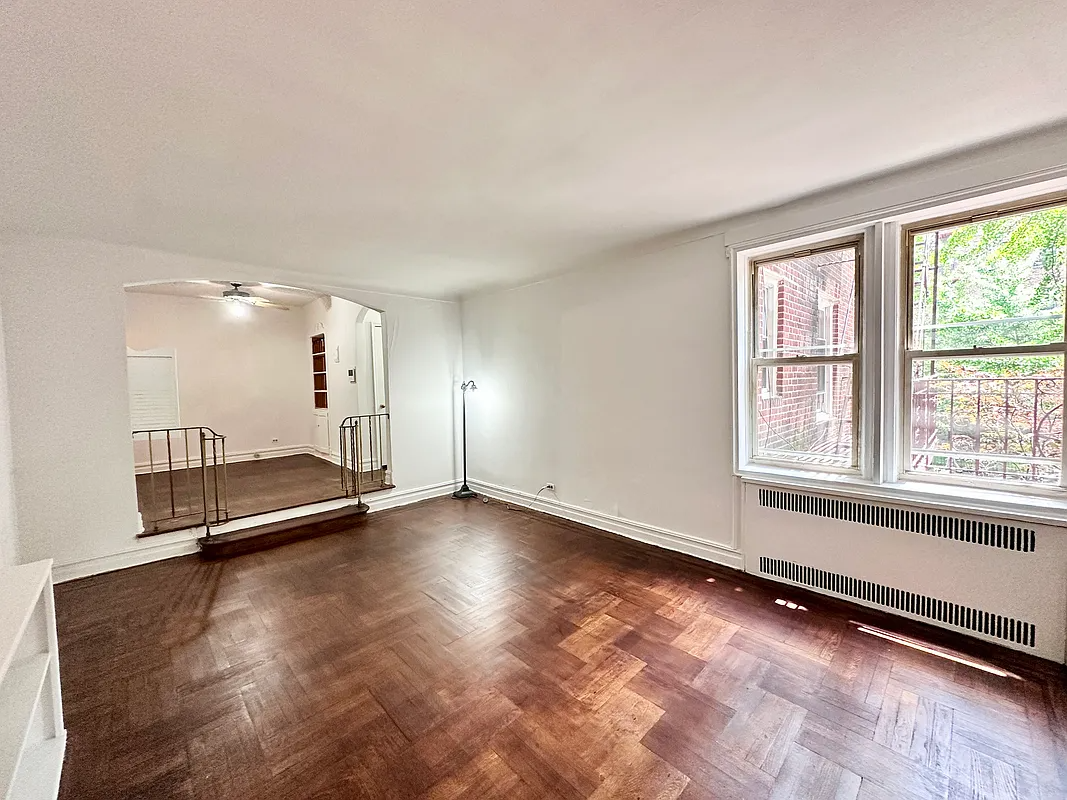Inside Third & Bond: Week 4
After discussing last week the myriad contractors a developer needs to line up to get a project done, David and Alison from The Hudson Companies discuss the frustrations and difficulties of trying to get a demolition permit for their condo project at 111 Third Street in Gowanus. We’re beginning to feel antsy. Before we can…


After discussing last week the myriad contractors a developer needs to line up to get a project done, David and Alison from The Hudson Companies discuss the frustrations and difficulties of trying to get a demolition permit for their condo project at 111 Third Street in Gowanus.
We’re beginning to feel antsy. Before we can begin building our project, we have to demolish the existing structures, which are 1-story and 2-story buildings. We are also demolishing foundations that remain from past buildings and the concrete parking pad at the corner of Third & Bond. We are in a rush to do the demolition because we still need to do soil excavation as well to remove contaminated soil beneath one of the structures. This is the only environmental remediation work that is necessary. Once the structures and contaminated soil are gone, the excavation and foundation work can begin.
While some of you probably believe that developers arrive in the middle of the night with a wrecking ball and no prior notice to demolish buildings, the reality is that getting a demolition permit can be a very long process. We’ve been pursuing our demo permit since June. Because demo permits are such a specialty, there is a subset of expeditors who focus solely on getting demo permits. Demo contractors have relationships with the demo permit expeditors, so the expeditor comes to the project through them.
Here is a list of things that are needed to get the demo permit:
• An exterminator has to come lay bait. The Department of Health requires this to be done so that any vermin inside the building don’t run out and make themselves at home next door when demolition occurs.
• Con Edison and Keyspan have to come to the site to cut off utilities. Since the structure is coming down, all the lines need to be cut.
• Likewise, the water and sewer lines have to be cut off.
• A licensed asbestos investigator has to test building materials and confirm either presence or absence of asbestos. If there is asbestos, as there was in our case, then the asbestos must be removed. The Department of Environmental Protection oversees this work, which we hired an asbestos investigator and contractor to do.
• Paperwork accompanies all of the above along with additional paperwork for the application for the demo permit itself, all which go to the Department of Buildings.
Most of these items went fairly smoothly a lot of trips to the site, a lot of waiting in the baking, hot sun for subcontractors, a lot of mosquito bites. The biggest roadblock was when one of the more brawny subcontractors tried to help Alison turn a key in a tough lock and broke the key off; worked out though when an even brawnier subcontractor broke down another door to gain access to the space.
But we did run into a few more serious problems.
The first one was a STOP WORK ORDER. Stop work orders are given by the Department of Buildings (DOB) and they mean exactly what they sound like. Stop. Work.
A DOB inspector stopped by the site while the asbestos contractor was up on the roof removing material that contained asbestos. Based on what he saw and maybe what he ate for breakfast, he determined that the asbestos removal constituted demolition, leaving a stop work order since we didn’t yet have a demo permit. The asbestos contractor disagreed in what we imagine might just possibly have been an ungentlemanly manner, citing DEP jurisdiction over asbestos removal and showing the DEP permit paperwork. Unfortunately, once an inspector places a stop work order it’s pretty much there to stay until you prove the violations have been rectified and pay a fine. Especially if you pissed him off enough that he refuses to leave his name and tears off down the street in his DOB vehicle.
We were really concerned about the stop work order, once we found out about it, that is, 3 days later when the demo permit expeditor saw it on the DOB’s website and called us up, frantic. She knew how hard we were pressing our schedule and that she could do nothing for us on the demo permit until the stop work order was cleared.
Stop work orders are serious and unpleasant business. They can be difficult to get removed and always require paying at least a minimum $5,000 fine.
We immediately called the asbestos contractor who colorfully described the interaction with the DOB inspector and assured us that he had all his required paperwork and permits. In response to our question about why he didn’t call us immediately he said, I didn’t even look at the order. It means nothing for me. I finished my work. And indeed, he did. He interpreted the Stop Work Order as Stop Work only if you needed a DOB permit in the first place, otherwise keep going because this has nothing to with you Order.
Now we were in a position of needing to go down to DOB and somehow get rid of a stop work order that A) we didn’t think we deserved, and B) had to be removed before we could get our damn demo permit.
If you’ve ever been to DOB, then you know it is a place full of frustrated people, lines, counters, windows, and inner fury. It’s also a place where some pretty great people do good work, trying to sort through complicated sets of plans, papers, and bureaucracy. With luck, you’ll find those great people before the inner fury takes over.
It took more than one trip to DOB, armed with the paperwork provided by the asbestos contractor, a review of the Building Code, a pleasant smile, and some caffeine to pull through. We must have been sent to a half dozen different counters, some of them more than once. After having the same conversation with twice as many people as there were counters, we finally found the guy who not only knew what was happening but also had the authority to act on it.
Turns out that there is a fine line between roof demo and asbestos removal; DOB is still figuring it out. It was either our charm or our paperwork that convinced them that we were on the right side of that line. Not only did they dismiss the stop work order but they didn’t even make us hand over the $5,000 check. We can assure you that it is the first time we’ve left DOB with a dismissed stop work order and the fine money still in our pocket.
With the stop work order drama behind us, we plan to start demo work next week. Also next week: talking with our neighbors.
—
In response to Guest 3:04 who answered the questions of HerWayorTheHighway and Guest 11:30 PM, and Guest 6:06 PM: Hey, thanks, well said!
In response to Pheights: We are looking at all kinds of variations on green and will be talking about it more here and looking for feedback.
In response to Guest 10:23: Price is always relevant, we don’t price the fee based on a percentage of the job, we’ve always believed that would dis-incentivize an architect to maintain cost controls. Instead, we pay by the square foot, typically in a range of $4-$8/SF.
In response to Guest 1:57: Don’t blame the broker, blame the developer. Marketing people, as well as all the consultants, will always have opinions but the responsibility lies with the developer to make the final decision.
From our lawyers: This is not an offering. No offering can be made until an offering plan is filed with the Department of Law of the State of New York.”
Inside Third & Bond: Week 3 [Brownstoner]
Inside Third & Bond: Week 2 [Brownstoner]
Inside Third & Bond: Week 1 [Brownstoner]





Guest 3:04 — I read through the bill and forwarded it to the demo contractor. Nothing is jumping out at me as a big change, but I’ll let you know what he tells me.
Alison–glad you are joining in the trenches of discussion with the rest of us…
I was just wondering if the new laws about demo that Spitzer signed this week will be changing anything about the way you will be proceeding?
Your links to weeks 1,2 and 3 are not working properly.
An excavator also looks like the “Snort” that puts the little bird back in the nest at the end of “Are You My Mother?”
FWIW, the Propertyshark “toxic sites” map says there’s a brownfield in the lot bound by 2nd/1st and Bond/2nd Ave, and a hazardous waste storage/treatment/disposal site right across the street. Anybody know the current status on these sites?
David and I thought we’d start joining the discussion in the comments section…
We do have fence permits, issued on 8/27, before the fence went up.
As for the demo: we’ll be using a combination of sledgehammers, jackhammers, concrete saws and excavators. Excavators are likely to be the biggest piece of machinery. They look similar to Mike Mulligan’s Steam Shovel, if you remember the children’s book. Of course, ours will be of the modern, gas variety.
We’ll also be doing some of the work the old fashioned way — by hand.
Honestly,who gives a shit!
It’s not old yet, is it? Man, talk about your “New York minute.” When we were in college, we could have milked something like this, with fresh permutations, for an entire semester.
I’m so tired of the “it will be worthless once AY gets built” joke.
I shows up in every post these days and has gotten so old.